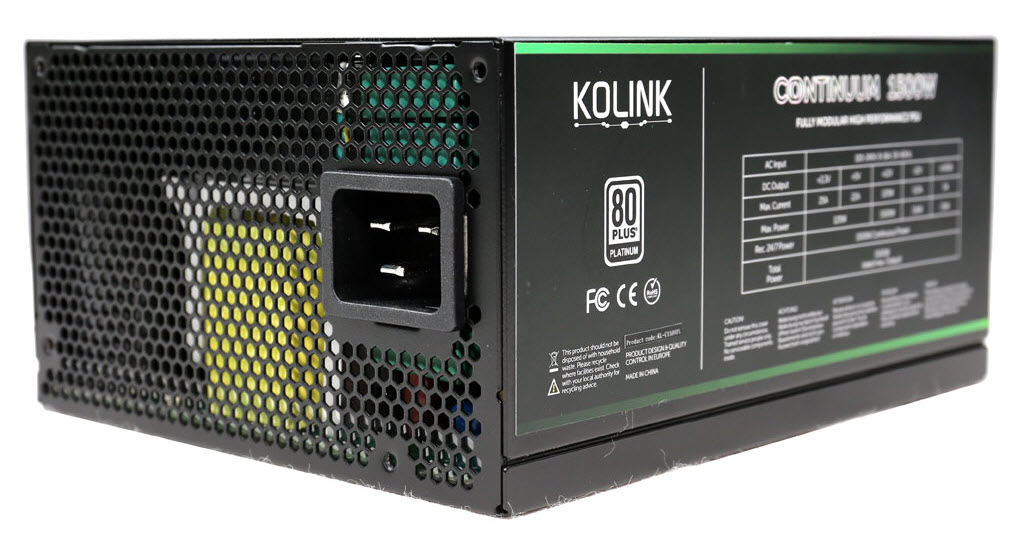Kolink Continuum KL-C1500PL PSU Review: Miner's Delight?
Why you can trust Tom's Hardware
Final Analysis
Kolink is going for miners with its KL-C1500PL. After all, those are the folks buying up all of the high-capacity PSUs right now. The company's cooperation with Enhance Electronics proved to be successful too, since its KL-C1500PL is a fine PSU with an unbeatable value ratio.
In Europe, there are hardly any high-capacity Kolink models available; miners get them before they are even listed on Caseking's site. We're expecting something similar to happen once those same PSUs land in the U.S. Kolink tells us that its PSUs will be available domestically sometime in the second half of 2018, and if it keeps the price of the KL-C1500PL close to $300, then we're pretty sure they'll sell out right away if mining is still popular.
Not all aspects of the KL-C1500PL are perfect, though. This is a budget-oriented product, after all. But lets start with the power supply's advantages before addressing its shortcomings. We already mentioned an attractive price. There's also solid build quality and a +12V rail that performs well to rave about. Moreover, the double ball-bearing fan is ideal for hot environments where FDB/HDB fans prematurely fail. The C20 power inlet is another strength, especially for areas with 115V mains. And a huge number of cables/connectors enables support for multiple graphics cards.
While the KL-C1500PL has many aces up its sleeve, it also suffers a number of drawbacks. One of the worst is its modular panel with identical EPS and PCIe sockets. A builder who is not careful can connect the EPS cable to a PCIe socket, and those cables are not electrically compatible. To make matters worse, the six-pin connector tied to the 24-pin ATX connector can be connected to one of the peripheral sockets. Enhance should pay more attention to the design of its modular panels and fix this problem.
Other downsides of the KL-C1500PL include increased noise due to an aggressive fan profile, no power switch, a lower-than-17ms hold-up time, and, for some, boring looks. As far as the power switch goes, Kolink claims that its absence helps improve the PSU's airflow and cut down on RMA rates (since OEMs often use cheap switches that cause trouble in high-capacity power supplies). In our opinion, the airflow argument is shaky, but Kolink may have a point about cheap switches. Still, we believe that a switch is essential on every PSU since it provides an extra safety layer.
MORE: Best Power Supplies
MORE: How We Test Power Supplies
Get Tom's Hardware's best news and in-depth reviews, straight to your inbox.
MORE: All Power Supply Content
Disclaimer: Aris Mpitziopoulos is Tom's Hardware's PSU reviewer. He is also the Chief Testing Engineer of Cybenetics, and developed the Cybenetics certification methodologies apart from his role on Tom's Hardware. Neither Tom's Hardware nor its parent company, Purch Media, are financially involved with Cybenetics. Aris does not perform the actual certifications for Cybenetics.
Current page: Final Analysis
Prev Page Performance, Value, Noise & Efficiency
Aris Mpitziopoulos is a contributing editor at Tom's Hardware, covering PSUs.
-
ozicom "The problem we see is that all eight-pin connectors have the same pattern, making it possible to accidentally connect an EPS cable to a PCIe socket and vice versa." Well I had a fully modular PSU in past and you can't connect eight pin of EPS to PCIe because the sockets may look same but they're not. If you look closer on top left two sockets of black and blue eight pins the notches are not same so you can't connect it. But if you tried and connect it it's a problem of course.Reply
